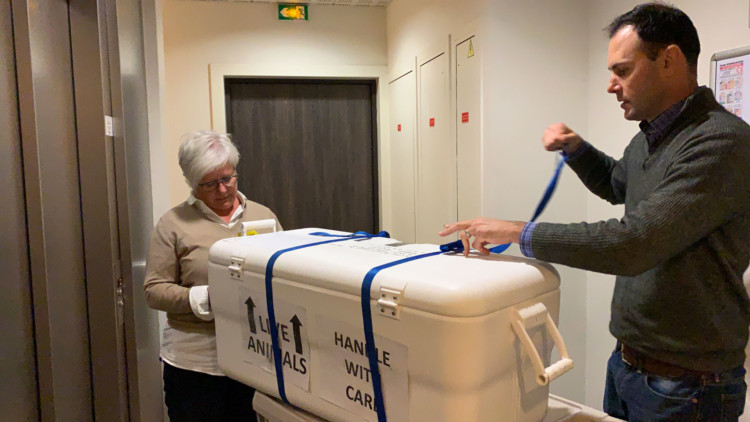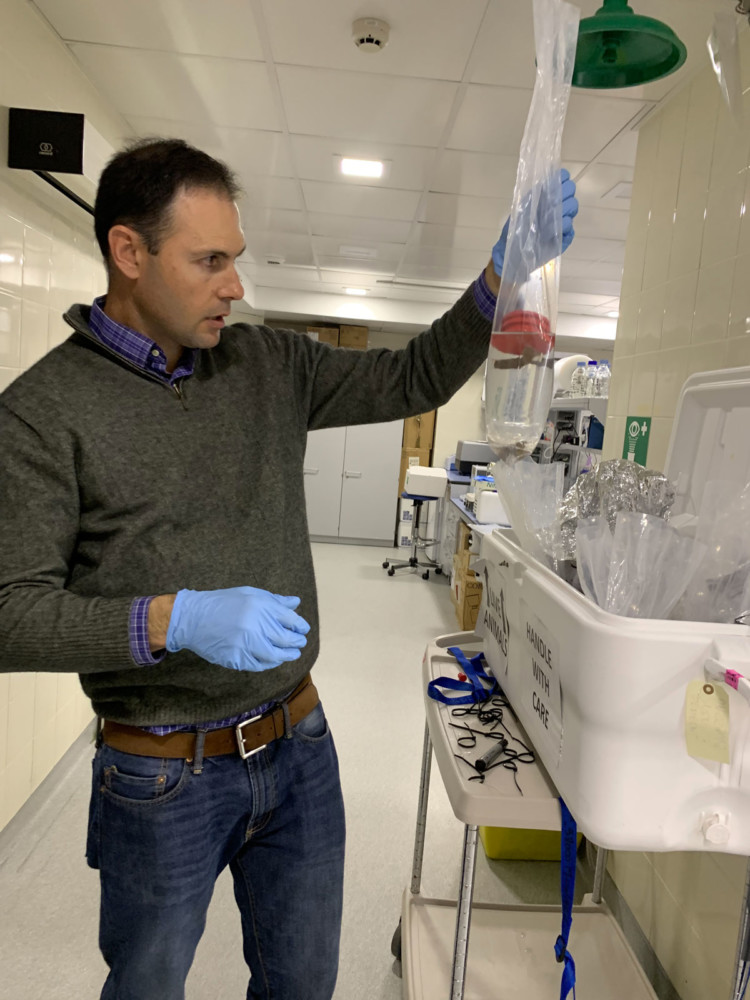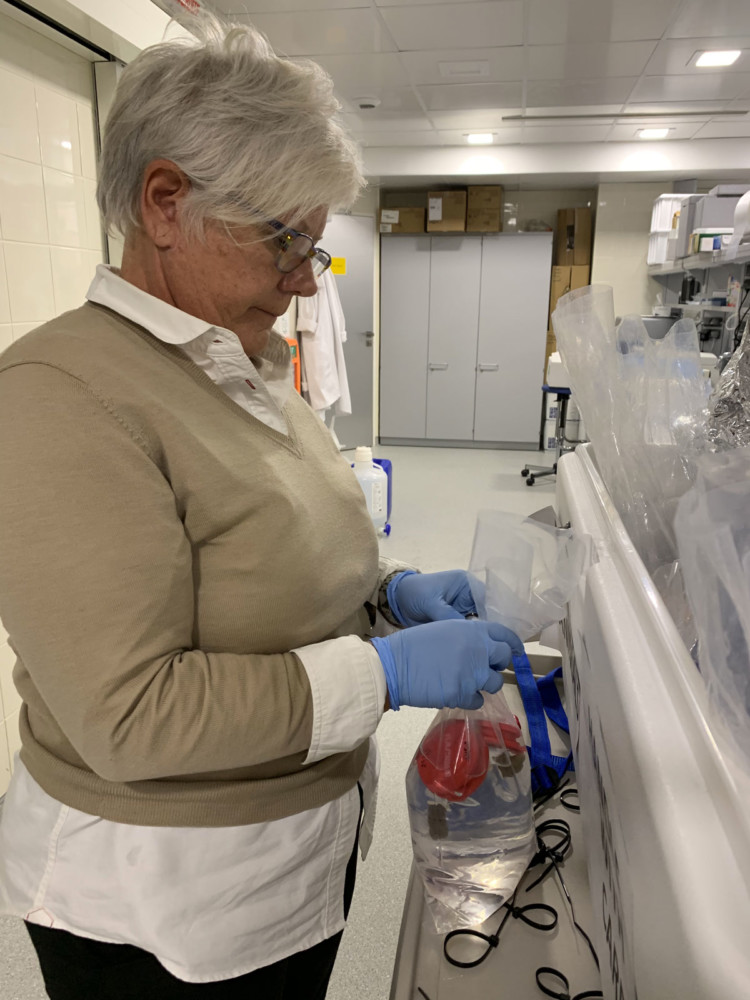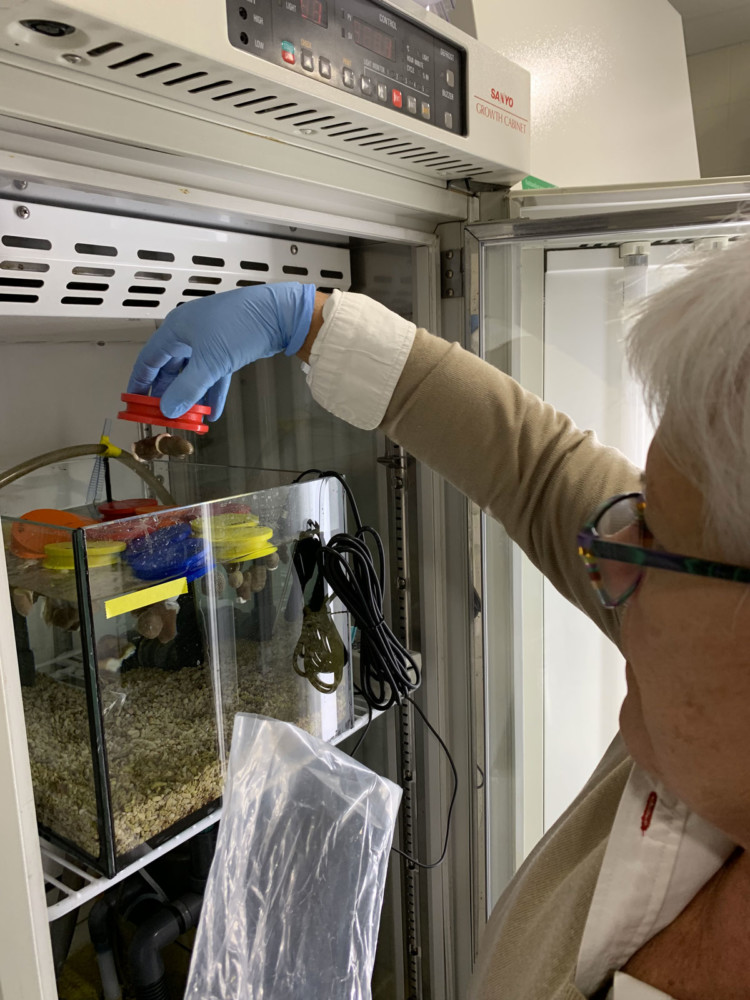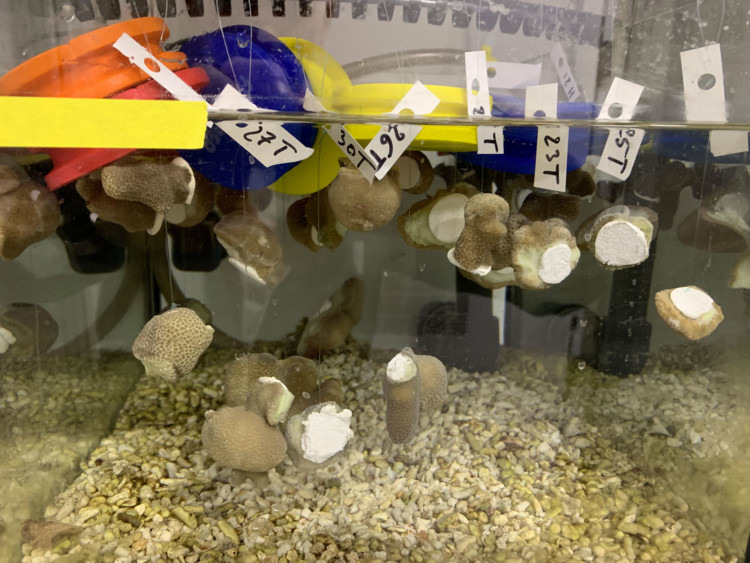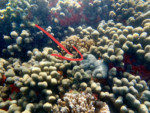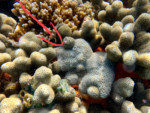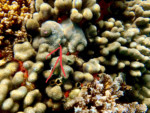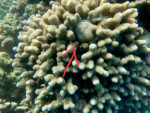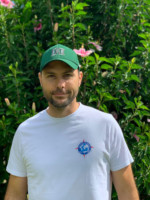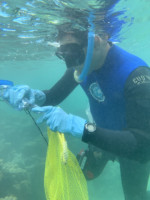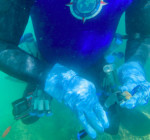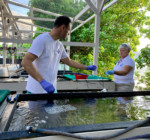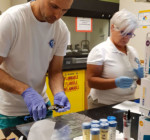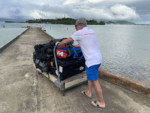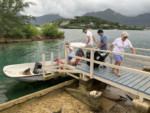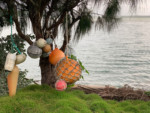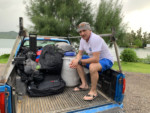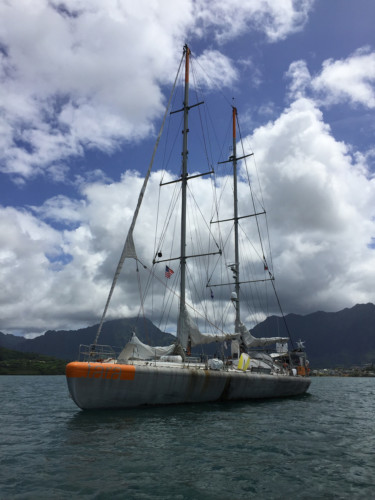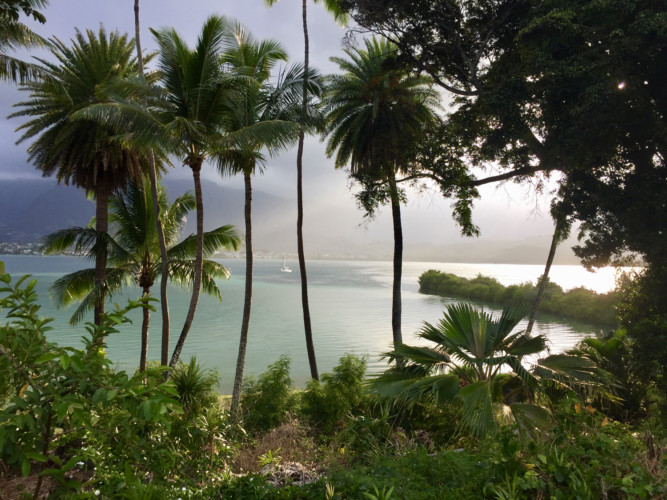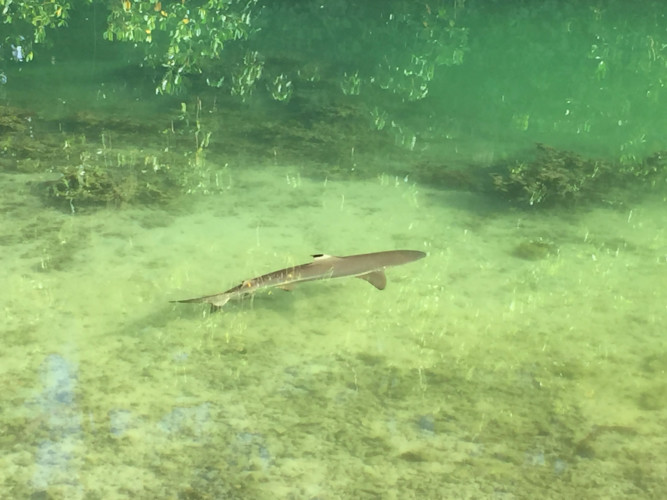The coral samples collected in Hawaii by Drs. Dorota Czerucka and François Seneca, researchers at Centre Scientifique de Monaco, have arrived at the laboratory and are alive and in good condition for continuing the research. The 140 samples include both healthy and diseased pieces of coral from colonies off the coast of Oahu Island in Hawaii. The research area is focused on innate immunity in the corals and in humans, and the researchers will study the means used by the coral to fight the diseased tissue.
[vc_row][vc_column][vc_column_text]Thank you to KITV for running a story on the evening news of our mission here in Hawaii.
[/vc_column_text][/vc_column][/vc_row][vc_row][vc_column][gem_button position=”center” size=”medium” corner=”3″ icon_pack=”elegant” text=”See video on KITV” link=”url:https%3A%2F%2Fwww.kitv.com%2Fstory%2F39608429%2Fcoral-showing-abnormal-growth-in-kaneohe-bay-could-be-cancerous||target:%20_blank|”][/vc_column][/vc_row]
These are photos taken today from our mission in Hawaii’s Kāneʻohe Bay on Moku O Loʻe Island. Each photo displays coral showing abnormal growths which may be caused by a virus, bacteria, or water temperature changes. The scientists on site from Centre Scientifique de Monaco have taken more than 100 samples from these diseased corals and will return them to their laboratory in Monaco to continue their research.
Dr. Francois Seneca is a Senior Scientist at Centre Scientifique de Monaco. He is a native of Monaco, and studied coral reefs around the world for almost 18 years before returning to work at CSM.
Seneca completed his Bachelors of Science at the University of Hawaii from 2001 – 2004. He wrote his senior thesis on abnormal growths on corals, advised by Dr. John Stimson, who was his coral reef ecology professor. His senior project, on which the thesis was based, was conducted here at HIMB.
After his undergraduate studies, Seneca returned to Monaco for an internship at CSM before attending James Cook University in Australia for his PhD in biochemistry and molecular biology. Following that, he held a post-doc position at Stanford University’s Hopkins Marine Station in Monterey Bay, California, USA where his work focused on the effects of climate change on corals. Next, he took a post-doc positions at UH’s Kewalo Marine Lab and finally at the Smithsonian Marine Station at Fort Pierce in Florida, USA.
Now, as a Senior Scientist at CSM he is working on the development of the Aiptasia sea anemone as a model for host-pathogen interactions from corals to humans.
If you are interested in Francois’ work you can fseneca@centrescientifique.mc
[vc_row][vc_column][gem_button position=”center” corner=”3″ icon_pack=”elegant” text=”Read on Big Island Now website” link=”url:http%3A%2F%2Fbigislandnow.com%2F2018%2F12%2F02%2Fscientists-study-links-between-human-and-coral-health%2F||target:%20_blank|”][vc_column_text] [/vc_column_text][/vc_column][/vc_row][vc_row][vc_column][/vc_column][/vc_row]
[/vc_column_text][/vc_column][/vc_row][vc_row][vc_column][/vc_column][/vc_row]
Our mission here in Hawaii is in collaboration with Drs. Dorota Czerucka and Francois Seneca from Centre Scientifique de Monaco (CSM). This team is working on a project on the development of the Aiptasia sea anemone as a model for host pathogen interactions from corals to humans. Part of this process is to collect samples from coral colonies here in Hawaii that are showing abnormal growths and attempt to understand why the growths are occurring and how the corals are reacting to and fighting the growths. In doing so, because of similarities in innate immunity in humans, it is also possible to apply this research to human health and immunity.
Collecting the samples is fairly simple, albeit tedious, work and the biggest challenge in this part of the research process is ensuring the samples are preserved correctly for a safe and healthy return to the laboratory in Monaco. The photo below shows an example of a coral with an abnormal growth (the top part).

Today, the Monaco Explorations team spent more than two hours in the waters of Kāneʻohe Bay off the shores of Moku O Loʻe Island, Hawaii to collect samples from corals showing abnormal growths. The team then brought the samples to the laboratory on-island to preserve them for their return to Centre Scientifique de Monaco. The goal is to understand if these abnormal growths are malignant and which mechanisms are activated to fight the growths.
Photos © Monaco Explorations.
On this mission, we are very fortunate to be hosted by the Hawaiʻi Institute of Marine Biology. (HIMB)The institute is owned and operated by the University of Hawaii and is located on the small private island of Moku O Loʻe, also known as Coconut Island. The island has a rich and interesting history, which you can read about on the HIMB website. To get to the island, you must have permission and a sponsor from the University, and show documentation of such to the ferry boat operator who transfers you from the pier to the island.
We arrived late in the afternoon and had just enough time to put our things away and walk around to explore before catching the ferry back to town for dinner. Tomorrow we begin collecting coral samples.
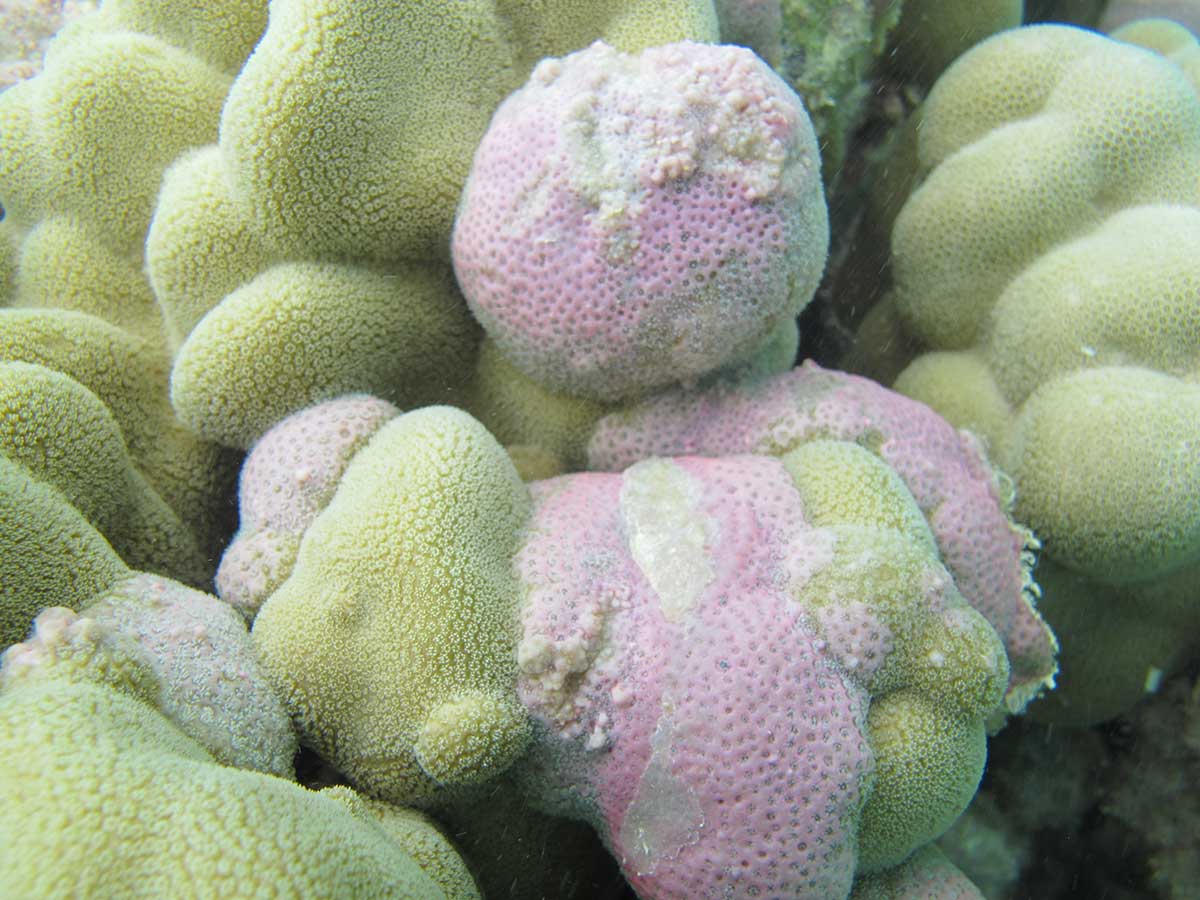
Researchers from Centre Scientifique de Monaco (CSM) will collect samples from two species of corals showing abnormal growths in Hawaiʻi’s Kāneʻohe Bay from November 30th until December 9th, 2018. The mission takes place as part of the Monaco Explorations campaign and will be hosted by the Hawaiʻi Institute of Marine Biology on Moku O Loʻe Island.
To read more, view the press release.
A team from Centre Scientifique de Monaco collected coral samples in Hawaii in June 2018. The team was concentrated on “tumors” found on corals, a phenomenon with poorly understood origins that affects more that 40 species of Scleractinian corals in the Indo-Pacific and Caribbean regions. This disease is characterized by an abnormal growth on a distinct area of the colony. Although the growths are known by some scientists as “tumors”, their malignancy remains to be determined. Yet, the origin of this disease may involve the bacteria living on the abnormal tissues.
From the 15th to the 25th of June, the CSM team will concentrate their work on “tumors” found on corals, a phenomenon with poorly understood origins that affects more that 40 species of Scleractinian corals in the Indo-Pacific and Caribbean regions. This disease is characterized by an abnormal growth on a distinct area of the colony. Although the growths are known by some scientists as “tumors”, their malignancy remains to be determined. Yet, the origin of this disease may involve the bacteria living on the abnormal tissues.
Similar to classical model organisms, these “tumors” represent a unique opportunity for multiple studies that would enrich our knowledge of coral biology, as well as coral innate immunity, which shows close similarities to humans.
Beyond the importance of this project to the future of coral reefs, this work will also help us better forecast future biomedical or biological problems, such as the links between diseases and the interactions of host-pathogens. Thanks to its double capacity in coral and medical biology, the CSM is a unique laboratory possessing the expertise to study these abnormal growths from the colony to the gene.
